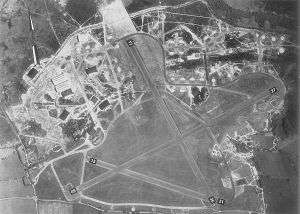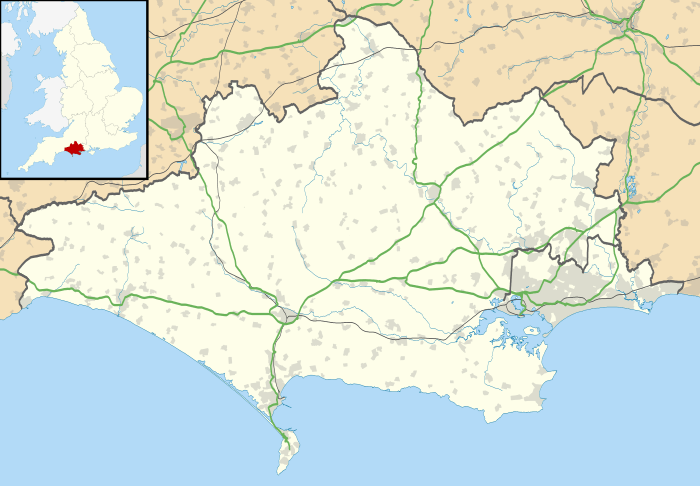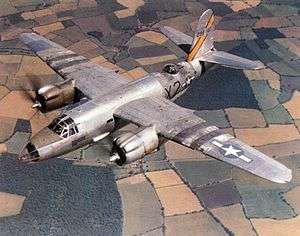RAF Hurn
RAF Hurn is a former Second World War airfield in Dorset, England. The airfield is located approximately 4 miles (6.4 km) north west of Christchurch; about 90 miles (140 km) southwest of London
| Royal Air Force Station Hurn USAAF Station AAF-492  | |
|---|---|
| Located near Bournemouth, Dorset, United Kingdom | |
 Hurn airfield photographed in May 1947 still showing its Second World War configuration | |
 RAF Hurn RAF Hurn, shown within Dorset | |
| Coordinates | 50°46′54″N 001°50′23″W |
| Type | Military airfield |
| Code | KU |
| Site information | |
| Controlled by | Royal Air Force United States Army Air Forces |
| Site history | |
| Built | 1941 |
| In use | 1941-1946 |
| Battles/wars | European Theatre of World War II Air Offensive, Europe July 1942 - May 1945 |
| Garrison information | |
| Garrison | RAF Transport Command Ninth Air Force |
| Occupants | Nos 297, 295, 296, 570 Squadrons 422nd Night Fighter Squadron 397th Bombardment Group |



Opened in 1941, it was used by both the Royal Air Force and United States Army Air Forces. During the war it was used primarily as a transport and fighter airfield.
Hurn was the final airfield in England for aircraft flying to Morocco for the North African and Italian campaigns, avoiding France, Spain and Portugal airspace.
Since 1969, it has also been called Bournemouth Airport. The RAF have returned to Hurn in the form of a temporary Outsourcing Contract for Multi-Engine Pilot Training to cope with limited capacity through normal Training Provisions using L3 Harris Airline Academy (2018 -).
USAAF use
Hurn was known as USAAF Station AAF-492 for security reasons by the USAAF during the war, and by which it was referred to instead of location. Its USAAF Station Code was "KU".
422nd Night Fighter Squadron
On 28 June 1944, Northrup P-61 Black Widow night fighters of the 422nd Night Fighter Squadron arrived from RAF Scorton, where their crews had been tutored in this particular aspect of air combat by the RAF. The detachment commenced operational flying on 3 July only to return to Scorton a week later.
397th Bombardment Group
On 5 August the 397th Bombardment Group arrived from RAF Rivenhall, equipped with Martin B-26 Marauders. The group consisted of the following operational squadrons:
- 596th Bombardment Squadron (X2)
- 597th Bombardment Squadron (9F)
- 598th Bombardment Squadron (U2)
- 599th Bombardment Squadron (6B)
The group's identification marking was a yellow diagonal band across both sides of the vertical tailplane. It moved the Advanced Landing Ground at Gorges, France, (A-26) on 19 August
The airfield was closed by the RAF in October 1944 and turned over for civil use.
References
![]()
- Freeman, Roger A. (1994) UK Airfields of the Ninth: Then and Now 1994. After the Battle ISBN 0-900913-80-0
- Freeman, Roger A. (1996) The Ninth Air Force in Colour: UK and the Continent-World War Two. After the Battle ISBN 1-85409-272-3
- Maurer, Maurer (1983). Air Force Combat Units Of World War II. Maxwell AFB, Alabama: Office of Air Force History. ISBN 0-89201-092-4.
- ControlTowers.co.uk http://www.controltowers.co.uk/H-K/Hurn.htm
- USAAS-USAAC-USAAF-USAF Aircraft Serial Numbers--1908 to present
External links
| Wikimedia Commons has media related to RAF Hurn. |
.svg.png)